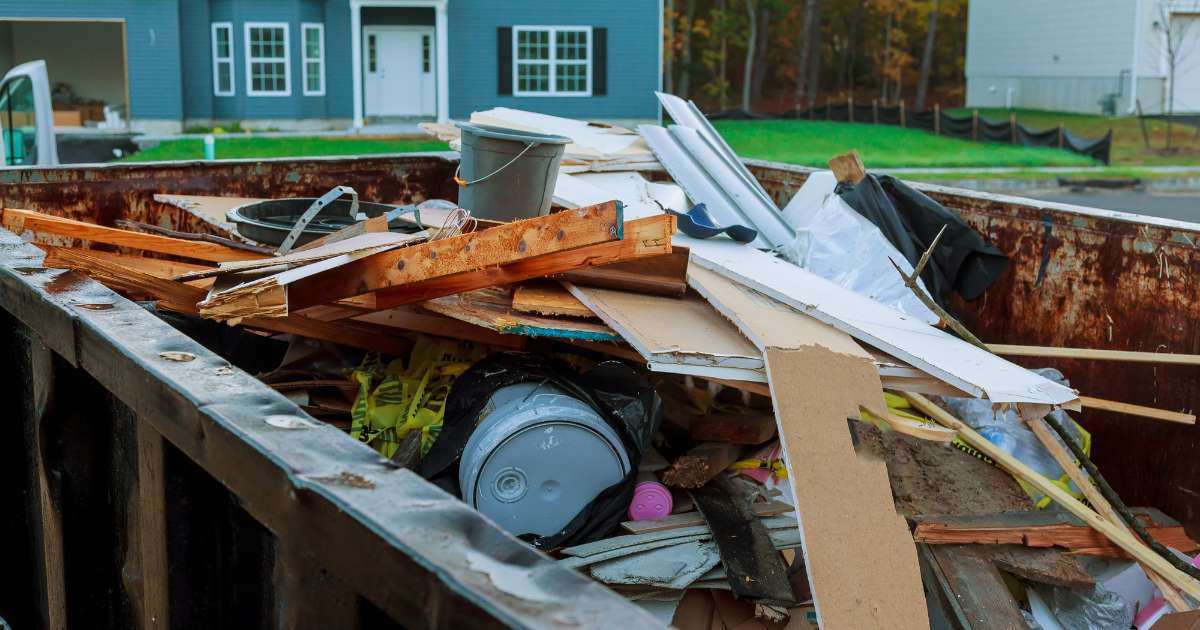Organizing a community clean-up event is a commendable effort to enhance the environment and foster community spirit. A crucial aspect of ensuring its success is having an effective dumpster rental plan in place.
Here is a comprehensive guide to help you create a dumpster rental plan for your community clean-up event:
Step 1: Assess the Scale and Scope of the Event
Before diving into logistics, define the event’s purpose and scope:
Size of the Area: Determine the geographic area covered during the clean-up. Use maps or surveys to identify specific locations that require attention.
Expected Volume of Waste: Estimate the quantity of trash and recyclables, considering historical data, visual inspections, or pilot clean-ups. Engage local waste management experts for better accuracy.
Type of Waste: Identify the kind of waste (general trash, recyclables, hazardous materials, electronic waste, etc.) to ensure appropriate disposal methods and to comply with local environmental regulations. For hazardous items, consider reviewing what not to put in a garbage disposal.
Step 2: Budget and Funding
Create a budget specifically for dumpster rentals and waste disposal:
Allocate Funds: Determine how much of the event budget can be devoted to waste management while accounting for unforeseen expenses.
Seek Sponsorships: Reach out to local businesses, environmental organizations, or municipal agencies for financial support. Highlight the community and environmental benefits of their contributions.
Grants and Donations: Apply for community improvement grants or accept donations from residents, local clubs, and other stakeholders. Provide recognition to sponsors through event marketing.

Step 3: Choose a Dumpster Rental Provider
Selecting a reliable provider ensures efficient waste management:
Research Local Companies: Look for providers specializing in community events and eco-friendly practices. Read reviews and request referrals. Additionally, ensure they take measures to prevent unauthorized dumpster use.
Compare Pricing: Obtain quotes from multiple vendors and compare based on services included, such as recycling or hazardous waste disposal.
Confirm Permits: Ensure the rental provider understands local requirements for dumpster placement and secures any necessary permits on your behalf.
Service Flexibility: Confirm the provider’s flexibility in terms of adding extra dumpsters, adjusting sizes, or providing extended rental periods if needed.
Step 4: Determine Dumpster Sizes and Quantities
Matching the dumpster size to the event’s needs prevents unnecessary expenses:
Size Options: Standard dumpster sizes range from 10 to 40 cubic yards. Consult with the provider for recommendations based on your estimated waste volume.
Smaller events: 10-20 cubic yards.
Larger events: 30-40 cubic yards.
Number of Dumpsters: For expansive areas or higher waste volume, consider renting multiple dumpsters, strategically placed for convenience.
Specialized Units: Request separate units for recyclables, compostables, hazardous waste, and electronic waste to streamline disposal efforts.
Step 5: Secure Locations for Dumpster Placement
Identify strategic locations for efficient access:
Centralized Locations: Place dumpsters near high-traffic zones where most waste is expected, such as parks, meeting points, or along designated routes.
Ease of Access: Ensure clear paths for delivery trucks and participants, keeping accessibility in mind for elderly or disabled volunteers.
Compliance: Check local regulations about public property usage for dumpster placement and avoid blocking essential pathways or emergency routes.
Step 6: Plan for Proper Waste Segregation
Promoting eco-friendly practices enhances the impact:
Labeling: Clearly label dumpsters for specific waste types (e.g., recyclables, hazardous waste, general trash). Use color-coded signage for easy identification.
Education: Provide participants with guidelines on proper sorting and disposal. Consider distributing flyers or using QR codes linking to online instructions.
Recycling Services: Partner with companies that prioritize recycling and responsible waste disposal. Engage in conversations about circular economy initiatives or zero-waste goals.
Step 7: Coordinate Dumpster Delivery and Pick-Up
Schedule logistics for a seamless clean-up day:
Timing: Arrange delivery at least a day before the event to ensure readiness. Coordinate pick-up shortly after the conclusion to avoid overflow or safety concerns.
Overflow Management: Prepare a contingency plan for additional dumpsters in case of excess waste, such as keeping emergency contact numbers handy for quick service.
Site Cleanliness: Assign volunteers to oversee dumpster areas and ensure they remain tidy after disposal activities. Consider a secondary clean-up sweep post-event.

Step 8: Promote the Event’s Waste Management Plan
Informing participants about the plan boosts engagement and compliance:
Community Communication: Share details via social media platforms, newsletters, or local news outlets, emphasizing the importance of proper waste disposal.
Visuals: Provide maps or visual aids highlighting dumpster locations, waste type guidelines, and check-in areas for volunteers.
Event-Day Updates: Use visible signage and volunteers stationed near dumpsters to guide participants in proper disposal methods.
Incentivize Participation: Offer rewards such as coupons, certificates, or community recognition for groups or individuals who demonstrate excellent sorting or disposal practices.
Step 9: Evaluate Post-Event Waste Management
Analyze the effectiveness of your plan to improve future events:
Review Metrics: Measure waste volume collected versus initial estimates. Categorize by waste type to understand recycling success rates.
Gather Feedback: Ask volunteers and participants for insights on dumpster accessibility, waste segregation, and overall logistics. Use surveys or open feedback forms.
Report Outcomes: Share results with the community via newsletters or a closing event. Highlight achievements, lessons learned, and the event’s environmental impact.
Document Learnings: Maintain detailed records of expenses, waste volumes, and participant feedback for future reference. This documentation can help secure funding for subsequent clean-ups.
Tips for a Successful Plan
Engage Volunteers: Enlist people to oversee waste sorting and disposal. Offer training sessions to empower them with knowledge and skills.
Stay Flexible: Be ready to adapt to unforeseen circumstances like weather, higher-than-expected participation, or waste volume.
Partner Locally: Collaborate with waste management and recycling centers for expert guidance. Consider working with community groups experienced in environmental projects.
Create an Impact Report: Post-event, compile a report summarizing waste diverted, funds used, and volunteer efforts to celebrate success and encourage ongoing community participation. An organized and well-thought-out dumpster rental plan ensures a smooth and impactful community clean-up event, leaving a lasting positive impression on participants and the environment.
Frequently Asked Questions
How much does it cost to rent a dumpster for a community clean-up event?
Dumpster rental costs vary depending on size, location, and rental duration. Smaller dumpsters (10-20 cubic yards) might range from $200-$500, while larger units (30-40 cubic yards) could cost $600 or more. Check with local providers for accurate quotes.
What type of waste is prohibited in dumpsters?
Hazardous materials like chemicals, batteries, paints, and electronics are often restricted. Confirm with the rental company for specific guidelines and arrange for separate disposal methods if necessary.
How far in advance should I book a dumpster?
Booking at least 2-3 weeks before the event is recommended to secure availability, especially during peak seasons.
How do I determine the right dumpster size for the event?
Estimate waste volume based on the area’s size, type of clean-up, and expected participation. Consult with rental providers for expert recommendations.
What should I do if the dumpsters overflow?
Include contingency plans for overflow, such as renting additional dumpsters or scheduling extra pick-ups with the provider.
Can I include recyclable materials in the same dumpster?
Separating recyclables is preferable to promote eco-friendly practices. Rent dedicated recycling dumpsters for better efficiency.
Conclusion
A well-organized dumpster rental plan is the backbone of a successful community clean-up event. By assessing needs, managing budgets, partnering with reliable providers, and engaging the community, you can ensure efficient waste management and leave a lasting positive impact.
Beyond cleaning up, such events encourage collective responsibility and contribute to a healthier, more vibrant community. Start planning today to make a difference!
